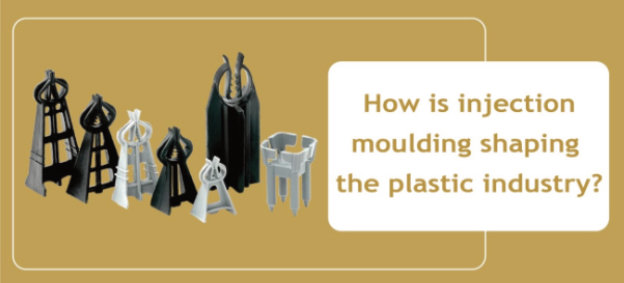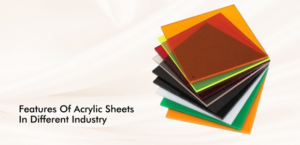
How is injection moulding shaping the plastic industry?
Injection moulding has been one of the most transformative advancements in plastic manufacturing, enabling mass production of intricate plastic products at an unprecedented scale. This versatile technique has transformed design, efficiency, quality control, and innovation across the plastic industry.
Let’s explore in detail how injection moulding brought about this revolution and its continued impact as a catalyst for growth.
Streamlining the Injection Moulding Process
At its core, injection moulding works by injecting molten plastic into a mould cavity shaped like the intended product. However, creating these highly precise moulds is an immensely complex process that requires in-depth engineering expertise.
This is where dedicated tool rooms come into the picture. Toolroom technicians collaborate closely with product designers right from the design concept stage. Leveraging specialized modelling software, they create virtual 3D models to assess the feasibility and devise an optimal mould design strategy.
The chosen mould design then goes into further refinement and simulation, balancing intricate details like thermal expansion with practical aspects like rapid moulding cycle times. The culmination produces an engineering masterpiece—a custom mould matching the exact specifications that drive the entire injection moulding process.
Unlocking Creative Liberty in Plastic Product Design
Before the advent of injection moulding, plastic manufacturing capabilities imposed limits on product designs. Conventionally, plastic component designs had to compromise on geometric complexity to permit manufacturing using techniques like thermoforming. Injection moulding fundamentally departed from this status quo by enabling the cost-effective production of complex and intricate plastic parts.
By enabling the rapid production of intricate structures, injection moulding gave designers unprecedented freedom to innovate. Plastic gears with complex tooth profiles, intricately shaped medical supplies, and interlocking construction toys—designers poured creativity into each product, knowing injection moulding could translate even highly complex 3D structures into reality.
This design flexibility catalysed growth across domains, benefiting plastics. Automotive engineers incorporated sleek injection moulded dashes and intricate control knobs into new models. Aerospace companies leveraged lightweight, moulded components. Even consumer goods like gadget cases underwent drastic transformations using decorative moulded embellishments. In effect, injection moulding removed the shackles around plastic product design innovation.
Injection moulding has encouraged the greater use of plastics in construction projects. It facilitated the cost-effective mass production of complex and durable plastic pipes, conduits, fittings, panels and structural components. By enabling innovative plastic building product designs with improved durability, injection moulding has directly driven the wider adoption of modern plastics to enhance efficiency in the construction sector.
Driving Manufacturing Consistency and Productivity
However, the true meteoric rise of injection moulding stems from its manufacturing superiority over conventional techniques. Injection moulding creates best-in-class production consistency unattainable previously in plastic fabrication.
Right from material waste reduction during moulding to significantly higher component quality standards, every plastic part coming off an injection moulding assembly line excels on consistency metrics. This production uniformity also makes end products more durable and extends product lifespans.
Alongside consistency, modern injection moulding facilities relentlessly drive productivity by utilising automation. Advanced robotic arms handle remoulding, trimming, quality audits and secondary assembly tasks faster and more reliably than human operators. This frees up critical manpower while almost doubling component output.
These characteristics established injection moulding as the gold standard for mass plastic, from toys to automobiles. For instance, global behemoths like Lego mundanely crank out billions of identical plastic bricks annually via high-volume injection moulding facilities.
Future-proofing with Smart Factories and Automation
Today, injection moulding remains at the forefront of driving innovation in plastic manufacturing. With Industry 4.0 and smart factory ecosystems becoming the new norm, injection moulding leverages automation, IoT sensors and data analytics to keep raising the bar.
AI-assisted optimization of critical process parameters already shows the potential to minimise moulding cycle times and material waste even further. Predictive maintenance bots track equipment performance cues to improve productivity. The latest mobile robots even automatically transport finished plastic components to warehousing zones without human intervention.
As the new wave of smart automation starts permeating injection moulding facilities, production efficiency seems certain to rise even higher. Coupled with its inherent advantages, these industry 4.0 upgrades will ensure injection moulding retains its billing as plastic manufacturing’s undisputed driving force through the 21st century and beyond.
In Conclusion
Injection moulding’s unique synergy of design versatility, manufacturing consistency and rapid iterative improvement catalyses a tectonic shift in plastic production. By enabling the mass fabrication of complex plastic articles unachievable previously, it unfurled waves of innovation across industries.
Even now, sustained advancements in robotics and smart factory ecosystems guarantee injection moulding remains future-proof as the front-runner of pioneering plastic manufacturing.
















